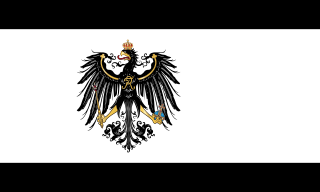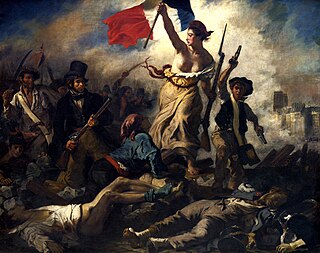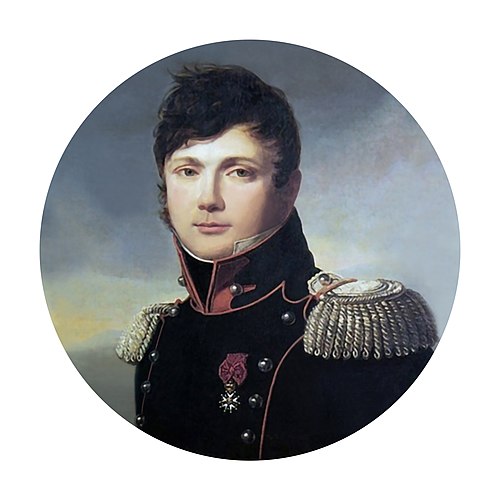
The Battle of Dresden was a major engagement of the Napoleonic Wars. The battle took place around the city of Dresden in modern-day Germany. With the recent addition of Austria, the Sixth Coalition felt emboldened in their quest to expel the French from Central Europe. Despite being heavily outnumbered, French forces under Napoleon scored a great victory against the Allied army led by Field Marshal Schwarzenberg.

André Masséna, 1st Duc de Rivoli, 1st Prince d'Essling was a French military commander during the Revolutionary and Napoleonic Wars. He was one of the original eighteen Marshals of the Empire created by Napoleon, with the nickname l'Enfant chéri de la Victoire.
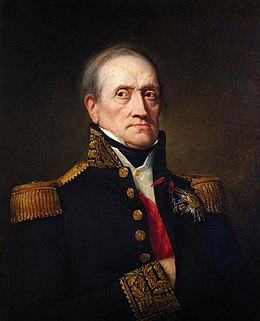
Marshal General Jean-de-Dieu Soult, 1st Duke of Dalmatia, was a French general and statesman, named Marshal of the Empire in 1804 and often called Marshal Soult. Soult was one of only six officers in French history to receive the distinction of Marshal General of France. The Duke also served three times as President of the Council of Ministers, or Prime Minister of France.

Charles Pierre François Augereau, 1st Duc de Castiglione was a soldier and general and Marshal of France. After serving in the French Revolutionary Wars he earned rapid promotion while fighting against Spain and soon found himself a division commander under Napoleon Bonaparte in Italy. He fought in all of Bonaparte's battles of 1796 with great distinction. During the Napoleonic Wars, Emperor Napoleon entrusted him with important commands. His life ended under a cloud because of his poor timing in switching sides between Napoleon and King Louis XVIII of France. Napoleon wrote of Augereau that he "has plenty of character, courage, firmness, activity; is inured to war; is well liked by the soldiery; is fortunate in his operations."

Antoine Adolphe Marcelin Marbot, was born in Altillac, the son of General Jean-Antoine Marbot, who died in the defence of Genoa under Masséna.

In the Battle of Aspern-Essling, Napoleon attempted a forced crossing of the Danube near Vienna, but the French and their allies were driven back by the Austrians under Archduke Charles. The battle was the first time Napoleon had been personally defeated in over a decade. However, Archduke Charles failed to secure a decisive victory as Napoleon was able to successfully withdraw most of his forces.

The Battle of Pułtusk took place on 26 December 1806 during the War of the Fourth Coalition near Pułtusk, Poland. Despite their strong numerical superiority and artillery, the Russians suffered the French attacks, before retiring the next day having suffered greater losses than the French, disorganizing their army for the rest of the year.

The Marbot family originated from the province of Quercy, near what is now the department of Corrèze in south-western France. It is of noble origin, although its members do not precede their names with any title.

Marie-Victor-Nicolas de Faÿ, marquis de La Tour-Maubourg was a French cavalry military commander under France's Ancien Régime before rising to prominence during the First French Empire.

Michael Friedrich Benedikt Baron von Melas was a Transylvanian-born field marshal of Saxon descent for the Austrian Empire during the Napoleonic Wars.

As Emperor of the French, Napoleon I created titles of nobility to institute a stable elite in the First French Empire, after the instability resulting from the French Revolution.

Duke of Montebello was a title created by the French Emperor Napoleon I in 1808 as a victory title for Jean Lannes, one of Napoleon's most daring and talented generals. Lannes commanded the advance guard in the crossing of the Alps in 1800 and was instrumental in winning the Battle of Montebello.
The Battle of Redinha was a rearguard action which took place on March 12, 1811, during Masséna's retreat from Portugal, by a French division under Marshal Ney against a considerably larger Anglo-Portuguese force under Wellington. Challenging the Allies with only one or two divisions, Ney's 7,000 troops were pitched against 25,000 men. In a typical rearguard action, Ney delayed the Allied advance for a day and bought valuable time for the withdrawal of the main body of the French army.

Auguste-Jean-Gabriel, comte de Caulaincourt was a French cavalry commander who rose to the rank of general during the First French Empire. He was the son of French general and senator Gabriel-Louis de Caulaincourt and younger brother of general and diplomat Armand Augustin Louis de Caulaincourt.
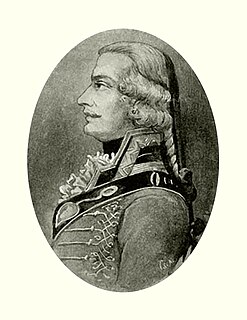
Joseph de Mesko, Freiherr von Felsö-Kubiny was a cavalry general and lieutenant-general in Austrian service during the French Revolutionary and Napoleonic wars.

Jacques Desjardin or Jacques Jardin or Jacques Desjardins; enlisted in the French royal army as a young man and eventually became a sergeant. During the first years of the French Revolutionary Wars he enjoyed very rapid promotion to the rank of general officer in the army of the French First Republic. In May and June 1794 he emerged as co-commander of an army that tried three times to cross the Sambre at Grandreng, Erquelinnes and Gosselies and each time was thrown back by the Coalition. After that, he reverted to a division commander and saw more service in the north of France, Belgium, and the Netherlands. In the campaign of 1805, he led an infantry division under Marshal Pierre Augereau in Emperor Napoleon's Grande Armée and saw limited fighting. In 1806 he fought at Jena, Czarnowo and Gołymin. He was mortally wounded at the Battle of Eylau on 8 February 1807 and died three days later. His surname is one of the names inscribed under the Arc de Triomphe, on Column 16.

Jean-Jacques Germain Pelet-Clozeau became a French general in the Napoleonic Wars and later was a politician and historian. He joined the French army in 1800 and became a topographic engineer. He joined the staff of Marshal André Masséna and was wounded at Caldiero in 1805. He served in southern Italy in 1806 and Poland in 1807. He was wounded at Ebelsberg and fought at Aspern-Essling and Wagram in 1809.
Antoine Noguès was a French Army general. He served in the Grande Armée as well as in the Hundred Days and the Waterloo Campaign.






